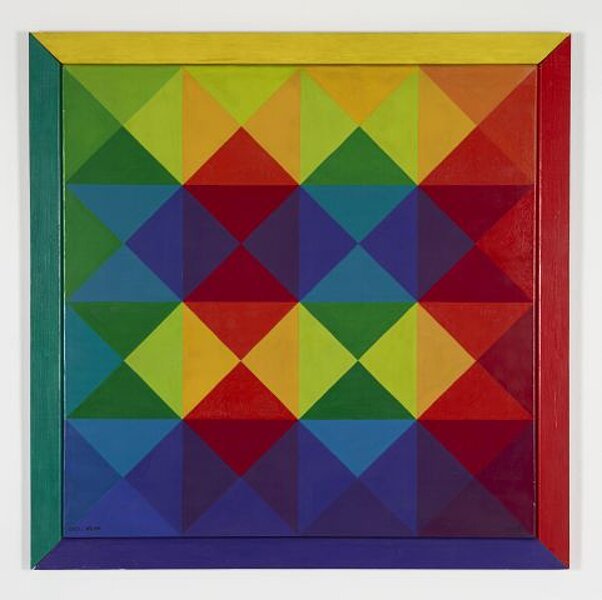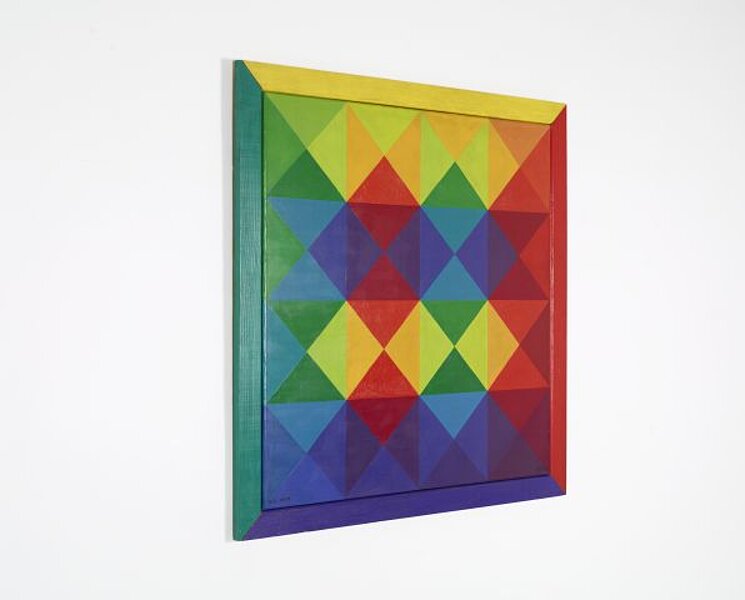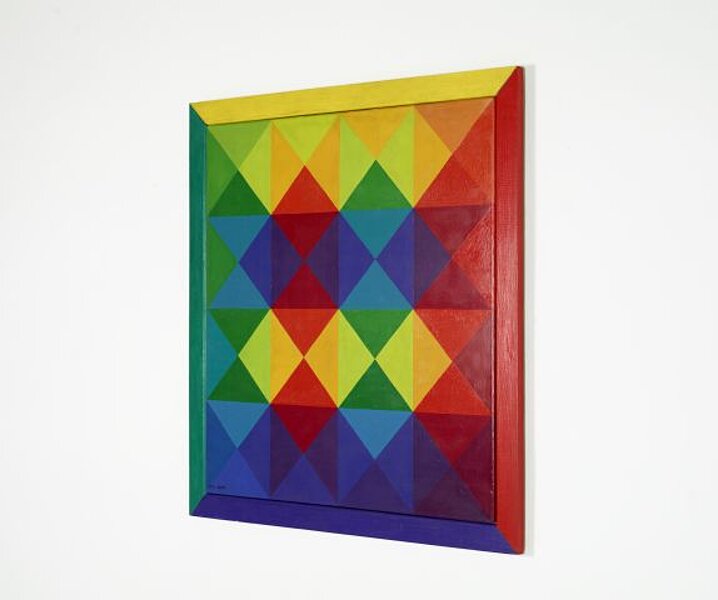
Tornquist, Jorrit
Opus 31
Opus 31
1964
| Object description | Oil on cotton and wood |
|---|---|
| Object category | painting |
| Material |
Object:
oil paint
|
| Technique |
Object:
oil paintings
|
| Dimensions |
Object:
height: 130,7 cm,
width: 131 cm,
depth: 4 cm
|
| Year of acquisition | 2007 |
| Inventory number | MB 13/0 |
| Creditline | Sammlung Dieter und Gertraud Bogner im mumok |
| Rights reference | Tornquist, Jorrit |
| Further information about the person | Tornquist, Jorrit [GND] |
| Literature |
Leidenschaftlich Exakt.Sammlung Dieter und Gertraud Bogner im mumok Genau und anders :Mathematik in der Kunst von Dürer bis Sol LeWitt |
Is there a right time for art? Is there just one place for art or are there many? Artist, architect, and color researcher Jorrit Tornquist would say: “You can make pictures in a certain way or have them made that way. You can express impressions. You can throw, paint or scratch paint onto walls and cloth or onto sidewalks and public squares. You can do it on Sunday, Monday, Tuesday. Any day is allowed. You can collect and disperse light.” The light that Tornquist disperses onto his work “Opus 31” is broken down into spectral colors. The frame is painted in the opposing complementary colors yellow and violet and red and green. This is like the color starting points for what happens in the inside—the work in the frame. In corner squares, all sixteen color tones used are united, and a total of sixty-four equal-sized triangles are painted. Tornquist does not organize his oil painting according to a model of natural phenomena like spectral light. He is rather looking for color and form relations that can speak to all of us. He draws on knowledge from the science of perception psychology in his aesthetic ideas. His color spaces thereby become emotional sensitive spaces and his pictures become optical and sensory investigations. Tornquist also works as an interior designer and designs for public spaces, such as his color plan for buildings in the old city of Turin.
© mumok – museum moderner kunst stiftung ludwig wien


